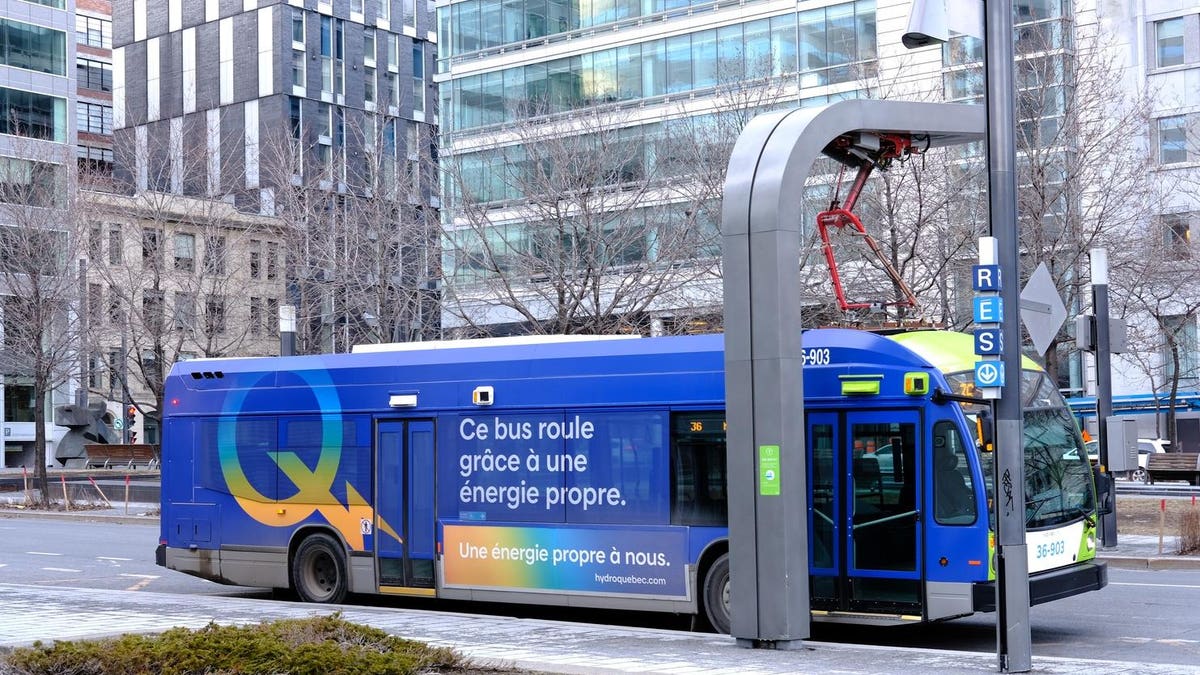In 2021, the Government of Canada set ambitious climate targets to reduce greenhouse gas (GHG) emissions by 40% below 2005 levels by 2030 and achieve net-zero emissions by 2050. To reach these goals, Canada must reduce its GHG emissions from 670 million tonnes (Mt) in 2021 to 440 Mt by 2030. While progress has been made in lowering emissions compared to the 2005 benchmark, it is crucial for Canada to enhance policy implementation, unlock investments, and scale up clean technology to expedite decarbonisation in high-emission sectors.
Among these sectors, transportation stands out as the second-largest contributor to Canada’s GHG emissions. To support Canada’s 2030 climate targets, the transportation sector must rapidly decarbonise and reduce GHG emissions by approximately 11% from 2005 levels. Despite the government’s efforts to promote improved fuel efficiency and exhaust systems, the proliferation of light-duty gasoline trucks and heavy-duty diesel vehicles, which accounts for nearly half of the transport emissions, have continued to rise and have a significant stake in the sector’s GHG emissions over the past 15 years.
But there is encouraging news regarding the adoption of zero-emission vehicles (ZEVs) in Canada. ZEV registrations have been on the rise, showing a strong increase of 43.2% year over year between Q3 2021 and Q3 2022. Additionally, ZEVs accounted for 8.7% of total new motor vehicle registrations in Q3 2022. This growth in ZEV uptake presents the greatest potential for reducing GHG emissions in the transportation sector as they can replace light-duty gasoline trucks and heavy-duty diesel vehicles on Canada’s roads. To shed light on this subject, three leading experts provide insights into strategies for increasing ZEV adoption and addressing associated barriers in Canada.
Educating consumers and businesses about the existing incentives to purchase ZEVs
According to the International Energy Agency, global electric car sales reached 10 million, representing 14% of the total car market in 2022, with sales expected to grow by another 35% to reach 14 million and market share at 18% in 2023. Notably, China continues to be the frontrunner, with 60% of global electric car sales taking place there in 2022. Europe and the United States, the second and third largest markets, also saw strong growth, with sales increasing by 15% and 55% in 2022 (Chart 1).
Chart 1: Electric car registrations and sales share in selected countries and regions, 2018-2022
Meanwhile, ZEV market share in Canada increased to 8.9%, up from 5.6% in 2021 but remains below the global average. To improve Canada’s uptake of ZEVs, the government has set ambitious ZEV sales targets to achieve 100% light-duty zero-emission vehicle sales by 2035. Costs are also coming down in the case of electric vehicles. New research shows that electric vehicles are, in fact, cheaper, often much more affordable than their gas counterparts over eight years of ownership and when driving 20,000 kilometres a year.
Cara Clairman, President and CEO at Plug’n Drive said, “The sticker price for a gas-powered model remains about $5,000 to $10,000 cheaper than its electric counterpart, but there are federal rebates of upto $5,000/year, and you can also save $2,000/year in operating costs so the difference can be made up quickly.”
Meanwhile, for businesses, Clairman adds, “The Incentives for Medium-and Heavy-Duty Zero-Emission Vehicles Program (iMHZEV) provides up to $200,000 along with the Zero Emission Vehicle Infrastructure Program (ZEVIP), which can fund upto 75% of the total project costs.”
Based on a recent survey conducted for Natural Resource Canada found that 53 per cent of the respondents had not heard of federal rebates for ZEVs, while for those who indicated their awareness of the Government of Canada rebates, most 64 per cent were unsure how to apply for them.
As a result, to improve adoption among consumers and businesses, Clairman emphasises, “It will be key to educate and inform consumers and businesses of the exciting programs and showcasing the benefit of using ZEVs, from a cost and environmental perspective. By better understanding EVs’ affordability and also developing the necessary charging infrastructure, we should see more people adopting EVs in the years ahead.”
Establishing a competitive ZEVs manufacturing sector to increase supply and create jobs
A recent study commissioned by Transport Canada found a steady increase in the registration of ZEVs in Canada in recent years but noted that the supply is still limited. Most (55%) dealerships don’t have a single ZEV in stock. Outside of British Columbia, Quebec, and Ontario, this percentage rises to 82% of dealerships. Wait times are also high, with 64% of Canadian dealerships reporting wait times of 3 to 6 months (or more) as of December 2021. Moreover, British Columbia and Quebec were home to 71% of all ZEVs and Plug-in-hybrid-electric vehicles (PHEVs) available for sale on Canadian dealership lots in 2021 (Chart 2), with several automakers focusing the vast majority of their inventory there, including Volkswagen (83%), Kia (86%), Honda (86%), and Ford (98%).
Chart 2: ZEVs available for purchase per 100,000 people, by province
According to Clean Energy Canada, this lack of supply and uneven distribution has held back the full deployment of ZEVs in Canada, with automakers prioritising other markets with more stringent emission standards or ZEV mandates.
Brian Kingston, President & CEO of the Canadian Vehicle Manufacturers’ Association, said, “A key way to address the lack of supply and uneven distribution is to ensure that the appropriate incentive programs to produce and purchase ZEVs are rolled out across Canada, with the charging infrastructure in place. Provinces such as British Columbia and Quebec with long-standing support for ZEVs have been the best uptake in Canada.”
Table 1: Impact of rebates and mandates on ZEV sales
Besides the incentive programs and charging infrastructure, Kingston points out that Canada’s ZEV sector needs to be competitive with the United States because of the Inflation Reduction Act, which has provided their economy with tax credits for battery production to help lower the cost and boost U.S. manufacturing of electric vehicles (EV).
As the global market for mass-manufactured clean energy technologies is projected to be valued at approximately US$650 billion annually by 2030—more than three times today, Kingston says, “having the appropriate production incentives for manufacturing combined with the execution on critical mines will be critical for Canada to take advantage of the economic growth opportunities and service the wider North American market for ZEVs. Given the recent shift by the U.S. to regionalise supply chain and manufacturing, Canadian products need to remain competitive to their counterparts in the United States.”
Furthermore, as North America’s manufacturing supply chain is closely integrated, Kingston points out that successfully implementing Canada’s critical mining strategy is vital in establishing a globally competitive ZEVs manufacturing base. He says, “Global automakers are pouring half a trillion dollars into the emerging EV and battery industries over the next five years. For these reasons, Canada has to execute these mining projects because they will derisk supply chain constraints and help attract companies to manufacture their products in Canada.”
A collaborative approach can accelerate fast-charging station infrastructure development
The International Energy Agency emphasises the crucial role of fast public charging infrastructure in driving widespread EV adoption. According to Natural Resources Canada’s latest figures, there are 22,543 ports (9,478 stations) for electric charging, of which 4,244 ports (1,582 stations) are categorised as DC fast chargers, accounting for only 19% of the overall charging stock. In comparison, 41% and 33% of the charging stock in China and Norway are fast charging. Canada has to catch up and invest more in fast-charging infrastructure as this shortage is a critical barrier hindering Canadians from adopting EVs.
Megan Lohmann, acting CEO of the Community Energy Association, says, “Given Canada’s vast geography, building fast-charging stations in urban and rural regions tends to have different challenges. For instance, developing a business case for rural regions requires federal grants and targeted investments to kick-start projects. Sufficient and appropriate siting can be a hurdle in urban areas, and the situation is additionally unique with multi-unit residential buildings.”
She adds, “To address these types of constraints, an integrated and regional approach is needed to develop fast-charging networks that cater to the demand for both urban and rural consumers as a holistic project rather than standalone installations. This approach can engage a broader group of stakeholders in developing a strong case for fast-charging stations.”
In Canada, the community-driven Peaks To Prairies EV Charging Network initiative is an example of advancing such a holistic project in urban and rural regions. The project has installed 20 fast-charging and co-located Level-2 stations throughout southern and western Alberta, involving Indigenous communities, all levels of government, private investors, and utilities.
Lohmann highlights that to advance the Peaks to Prairies project, “the network design consisted of fast-charging stations in rural and urban regions to reduce the range anxiety for urban consumers looking to adopt a low carbon mode of transportation for their travels and bring a range of stakeholders across the rural regions into the project to get buy-in. As a result, the project secured grants from the Federation of Canadian Municipalities and the Government of Alberta by showcasing the overall environmental and economic development benefits.”
Read the full article here





